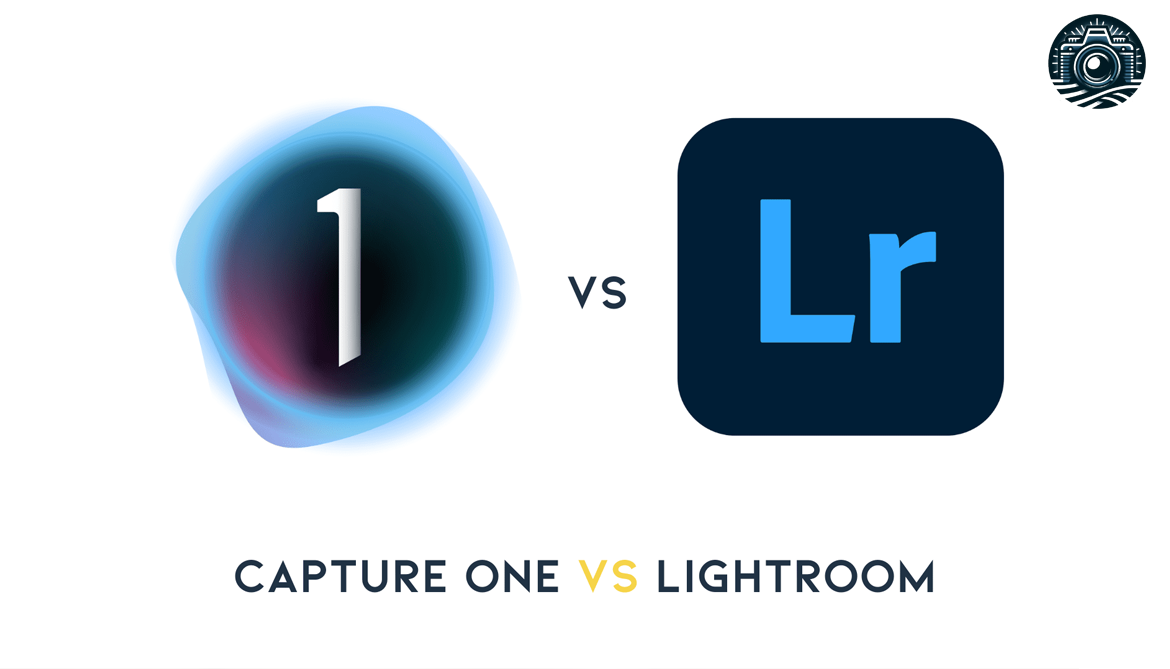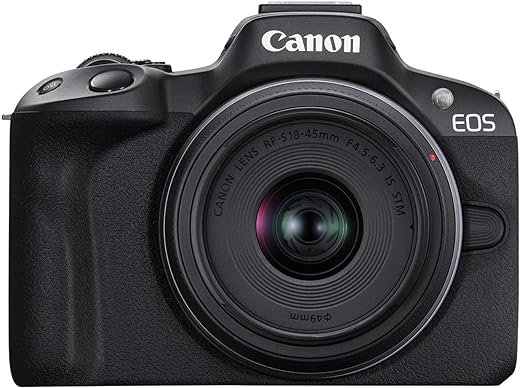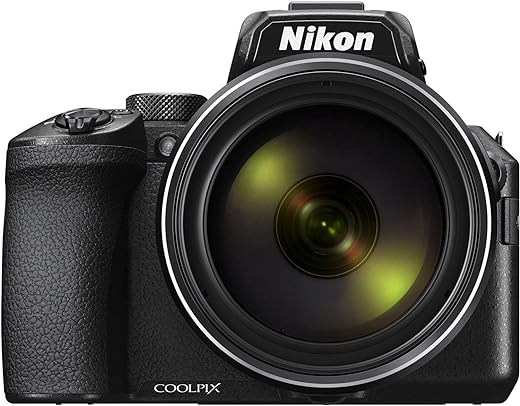Choosing the right photo editing software is a common challenge. Ivor Rackham compared Capture One Pro and Adobe Lightroom Classic on image quality and performance. This article will guide you through their differences, helping you pick the perfect tool for your photography needs.
Read on to learn more!
Key Takeaways
- Capture One Pro offers detailed color grading, and noise reduction, and is especially good for Canon, Nikon, and OM System users. Its customizable workspace lets you edit more efficiently.
- Adobe Lightroom is great for organizing photos and makes editing easy with its AI-driven masking system. It’s user-friendly and comes with cloud storage for editing on the go.
- While Capture One Pro has a steeper learning curve and higher upfront cost, it provides superior image quality. Adobe Lightroom is more affordable with a subscription model and simpler to use from the start.
- Both software handle layers differently; Capture One allows precise adjustments with adjustment layers while Lightroom uses local adjustments for targeted edits without full layer functionality.
- Choosing between them depends on your priorities: if you value deep color control and image quality, Capture One might be better. If ease of use and affordability are key for you, then Lightroom could be the right choice.
Capture One Pro: A Closer Look

Capture One Pro stands out for its powerful tools that help photographers make their images pop. It offers unique color grading, detailed noise reduction, and sharp file management features that make working with RAW files a breeze.
Advantages of Capture One Pro
Capture One Pro shines for Canon, Nikon, and OM System users. These photographers get crisper images and truer colors right from their cameras with this software. Its tools for fixing exposure, enhancing dynamic range, and cutting down on unwanted digital noise make photos look their best.
I’ve noticed how my own Canon shots have more pop in color and detail when I use Capture One Pro.
This program also lets you change its layout to fit your workflow. You can move panels around or hide them to create a workspace that feels just right for you. This level of customization means you spend less time searching for tools and more time making your photos perfect.
Plus, the ability to work with layers without leaving the app makes advanced editing tasks simpler and faster.
Limitations of Capture One Pro
Moving from the benefits to some hurdles, Capture One Pro might not be everyone’s first choice. Its premium price can push budget-conscious photographers towards other options. This software asks for more money upfront compared to others that use a subscription model.
For users used to the Adobe environment, adapting to Capture One Pro’s unique workspace takes time and effort.
During my time with this tool, I noticed something about its sliders and color controls—they handle differently than those in Adobe Lightroom Classic. Brightening shadows or darkening highlights requires a different touch.
It was tricky at first, making precise adjustments felt less intuitive than expected. Newcomers should prepare for a learning curve that might slow them down initially.
Adobe Lightroom: An In-Depth Analysis

Adobe Lightroom shines as a powerful photo organizer and editor. It makes improving your photos easy, no matter if they’re digital images from a Sony camera or snapshots from an iPhone.
Advantages of Adobe Lightroom
Lightroom shines with its powerful masking system for editing specific parts of your photos. It uses AI to make complex masks quick and easy. This is great for selective changes without hurting the whole picture.
Its workflow with Photoshop means you can always go back to your original, unedited photo if needed. You won’t lose your edits either.
The program excels in fixing color fringes on edges of objects too – that’s chromatic aberration correction. Plus, it lets you make photo books, find places on a map module, and even print directly from the software.
For photographers always on the move, Lightroom includes a mobile version and cloud storage in its subscription. This makes working from anywhere simpler.
“Editing made easier – dive deep into creativity with Lightroom.”
Limitations of Adobe Lightroom
After exploring the strong points of Adobe Lightroom, let’s shift gears to discuss its limitations. One notable challenge is with color accuracy. Specifically, when using a Sony camera to photograph people of color, Lightroom can struggle.
This issue might not be evident in all situations but it’s crucial for photographers who prioritize true-to-life colors in their portraits. From my personal experience, this limitation has sometimes forced me to spend extra time tweaking settings to achieve the desired outcome.
Additionally, those who work extensively with Fujifilm images may notice that Lightroom Classic doesn’t capture as much detail in green shades compared to Capture One Pro. For landscape photographers or anyone who often photographs nature scenes, this difference could be a deal-breaker.
Despite these issues and even though I am familiar with Lightroom’s layout and find it user-friendly, these are significant considerations that affect my editing process and final image quality.
Comparing Raw Image Quality: Capture One Pro vs Adobe Lightroom
In our journey to discover the best photo editing software for photography enthusiasts, let’s focus on raw image quality between Capture One Pro and Adobe Lightroom. Both platforms have their strengths, but when it comes down to the nitty-gritty of image processing, the differences become apparent. Here’s a quick comparison.
| Aspect | Capture One Pro | Adobe Lightroom |
|---|---|---|
| Image Sharpness | Sharper details out of the box. Offers more control over the sharpening process. | Generally softer images initially, but can be adjusted for sharpness. |
| Color Handling | Superior global color adjustments. Vibrant and true-to-life colors. | Colors may require more tweaking to match the vibrancy of Capture One Pro. |
| Exposure Management | More nuanced control, especially in highlights and shadows. | Tools available, but some photographers find them less precise. |
| Camera Compatibility | Direct support for Nikon, Canon, OM System, and Sony, leading to potentially better outcomes. | Supports a wide range of cameras but may not optimize as closely for specific brands. |
| File Handling | Handles large batches of raw files smoothly, with a focus on workflow efficiency. | Can slow down with very large sets of images, depending on the hardware. |
Drawing from firsthand experience, Capture One Pro tends to bring out the best in raw files, particularly when it comes to details and colors. During tests with Nikon and Canon DSLR cameras, images appeared more vibrant and dynamic straight out of Capture One Pro compared to Lightroom. With Sony mirrorless cameras, though, the differences in exposure were noticeable, but not always in favor of swapping platforms.
For photographers leaning heavily towards image quality and color fidelity, Capture One Pro might be the more appealing choice. That said, Adobe Lightroom still holds a strong place for its ease of use and extensive community and learning resources.
The exploration doesn’t end here. Moving on, let’s delve into how these platforms compare in terms of features.
Comparing Features: Capture One Pro vs Adobe Lightroom
Diving into the world of photo editing software can feel like navigating a maze, but let’s simplify things. We’re looking at Capture One Pro and Adobe Lightroom, two giants in the field. Their features set them apart, influencing your workflow and end results significantly. Let’s break it down in a way that’s easy to grasp.
| Feature | Capture One Pro | Adobe Lightroom |
|---|---|---|
| Color Editing | Offers advanced color editing tools, with more vibrant and saturated results. | Strong in global color adjustments but might produce less vivid colors compared to Capture One. |
| Raw Image Processing | Superior image quality, especially for certain camera brands. | Consistent performance across a wider range of camera brands. |
| Tethering | Highly favored by professionals for its fast tethering capabilities. | Offers tethering but with slower performance compared to Capture One. |
| Layers and Masking | Employs a more sophisticated approach, allowing for intricate editing. | Simpler, more intuitive layers and masking, suitable for beginners. |
| User Interface | Has a steeper learning curve but offers a customizable interface. | More straightforward and user-friendly, with an easier learning curve. |
| Price | Higher upfront cost, with a perpetual license option. | Subscription-based, generally more affordable in the short term. |
Through firsthand experience, I’ve found Capture One Pro’s color editing capabilities to truly shine when dealing with portraits. The skin tones appear more natural, and the details are crisper, making your subjects pop. However, Adobe Lightroom’s user-friendly interface and simplified workflow make it a go-to for many photographers, especially those just starting out or those who value speed and efficiency over ultra-detailed editing.
Both programs boast an array of features, catering to a wide variety of needs and preferences. Whether you value the superior image quality and meticulous color control offered by Capture One Pro or the more intuitive, streamlined process of Lightroom, your choice will significantly influence your photographic journey. It’s all about finding the right tool that aligns with your workflow, artistic vision, and budget.
Use of Layers in Capture One Pro and Adobe Lightroom
Moving from comparing features, let’s talk about how Capture One Pro and Adobe Lightroom use layers. Both programs allow photographers to edit images in ways that can really bring out their beauty.
But, they handle layers differently.
Capture One Pro lets you add adjustment layers. This means you can change things like exposure or color on different parts of your photo without affecting the whole image. I’ve found this super helpful for fixing shadows or highlights in specific areas.
You just pick a part of your picture and make your changes right there.
Adobe Lightroom uses something called “local adjustments” instead of layers for direct changes. You can still target certain parts of your photo with tools like the graduated filter, radial filter, and brush tool.
These tools help adjust lighting or color in chosen areas only. It works well but feels a bit less flexible than Capture One’s method.
“In my experience, using layers in Capture One Pro feels more precise for targeted edits.”
Mobile Photo Editing: Capture One Pro vs Adobe Lightroom
Capture One Pro and Adobe Lightroom both shine in mobile photo editing, but they cater to different needs. Capture One Pro is great for those who want precise control over their images.
Its interface might seem complex at first, but it offers detailed adjustments that serious photographers appreciate. I’ve used it when fine-tuning colors and exposure, and the results are impressive.
Adobe Lightroom, on the other hand, feels more accessible from the get-go. It’s excellent for quick edits and has a more straightforward approach to managing files—making it a favorite among photographers who need efficiency along with quality.
The cloud storage feature means you can work on your photos anywhere, which came in handy during my last trip when I had only my tablet with me. Both tools have their strengths; deciding between them depends on what you value most in your photography workflow.
Pricing: Subscription vs Perpetual License
Let’s talk about one of the most critical factors in choosing photo editing software, the price. Both Capture One Pro and Adobe Lightroom come with different payment models. Each has its advantages, depending on your needs and budget.
| Software | Pricing Model | Key Points |
|---|---|---|
| Capture One Pro | Perpetual License and Subscription | You can buy it once and own it forever, receiving updates requires additional payment. Also offers a subscription model. |
| Adobe Lightroom | Subscription Only | Monthly or yearly payments give continuous access to the latest updates without extra cost. |
Many photography fans appreciate the flexibility. With Capture One Pro, the choice between a perpetual license and a subscription allows you to decide. If you dislike regular payments, paying once might sound great. But, remember, updates will cost you.
Adobe Lightroom keeps it simple with a subscription model. You always have the latest version. There’s no worrying about paying more for updates. This can make keeping your software current easier.
So, the decision boils down to personal preference. Do you prefer a one-time payment and potentially extra costs later? Or do you like the idea of consistent updates included in a subscription fee?
Carefully consider how each model fits your workflow and budget.
Let’s move on to discussing user experience and the learning curve of both programs.
User Experience: Ease of Use and Learning Curve
Capture One Pro offers a powerful set of tools for those who want to make their photos pop. Its detailed color adjustments, dynamic range handling, and sharpness are top-notch, especially for brands like Sony and Fujifilm.
But mastering Capture One can feel like climbing a mountain at first. The software has many advanced features that demand time to learn. Yet, those who stick with it often say the climb is worth the view.
“Ease of use may come easy after practice.”
Adobe Lightroom, on the other hand, welcomes newcomers with open arms. Its interface is cleaner and more intuitive. Learning how to adjust white balance or fix underexposed shots can be much simpler here.
Adobe’s solution also syncs easily across devices – so editing on your smartphone or tablet feels seamless. For many photography enthusiasts, Lightroom turns out to be the friendly guide they need in the vast world of photo editing.
Final Verdict: Which is Right for You? Capture One Pro or Adobe Lightroom
Choosing the right photo editing software depends on what you need and prefer. If detailed color control and high-quality images are your top priorities, Capture One Pro might be your pick.
It shines for photographers who enjoy tailoring every aspect of their photos, especially with certain camera brands. On the flip side, Adobe Lightroom stands out for those seeking a more user-friendly tool that doesn’t sacrifice power for ease of use—perfect for beginners or those wanting quick results without a steep learning curve.
Both programs offer paths to stunning photographs, but your choice hinges on whether you prioritize precision or simplicity in your photography journey.
Conclusion
Deciding between Capture One Pro and Adobe Lightroom comes down to what you need. Do you love tweaking colors and crave high image quality? Capture One might be your match. Prefer an easier start with photo editing? Go for Lightroom.
Both programs offer unique benefits, from workspace customization in Capture One to Lightroom’s user-friendly approach. Your choice shapes how you bring photos to life, whether it’s on a phone or a computer.
Think about what matters most in your photography journey, and pick the tool that feels right for you.
FAQs
1. What’s the big deal with RAW files in Capture One Pro and Adobe Lightroom?
RAW files, like Sony RAW or DNG, are digital negatives that let you tweak your photos without losing quality. Both Capture One Pro and Adobe Lightroom shine in handling these files, giving you control over color balance, fixing under-exposed shots, and correcting chromatic aberrations.
2. Can I organize my photos easily with this software?
Yes! Adobe Lightroom CC offers a photography plan that includes cloud storage, making it simple to access your PSDs or JPEGs from anywhere. On the other hand, Capture One Pro focuses on file organization on your disk space—think of it as having a neat digital back for all your photographed memories.
3. How do they help with editing images taken with different cameras?
Whether you’re shooting with a full-frame mirrorless camera or a micro four-thirds system like M.Zuiko Digital lenses on an Olympus, both software have you covered. They support various file types—from Fujifilm X100F to Nikon Z-mount captured images—ensuring compatibility across many devices.
4. Do either offer special features for professional retouchers?
Indeed! Capture One Pro is known for its advanced color editing capabilities and tethering support for studio shoots—it’s like having an autofocus feature but for post-processing efficiency. Meanwhile, Adobe Lightroom’s print module can be a lifesaver when preparing exhibition-quality prints.
5. Is there any difference in how they handle blown highlights or dark shadows?
Absolutely,—Capture One Pro often gets praised for its ability to recover details from blown highlights and bring clarity to shadows without introducing noise—a bit like finding treasures in the trash folder of forgotten shots! Whereas Adobe’s solution leans heavily into overall exposure adjustments through its intuitive sliders.
6. Which one should I choose if I’m new to photo editing?
Think about what matters most to you: If ease of use and ample online tutorials matter—Adobe Lightroom might be your best bet; it’s user-friendly even if all this talk about metadata and xmp sounds Greek to you now. However, if you crave precision control over every pixel—or have specific needs around medium format photography—Capture One could be worth diving into., Remember, each has trial versions so why not test them out?




